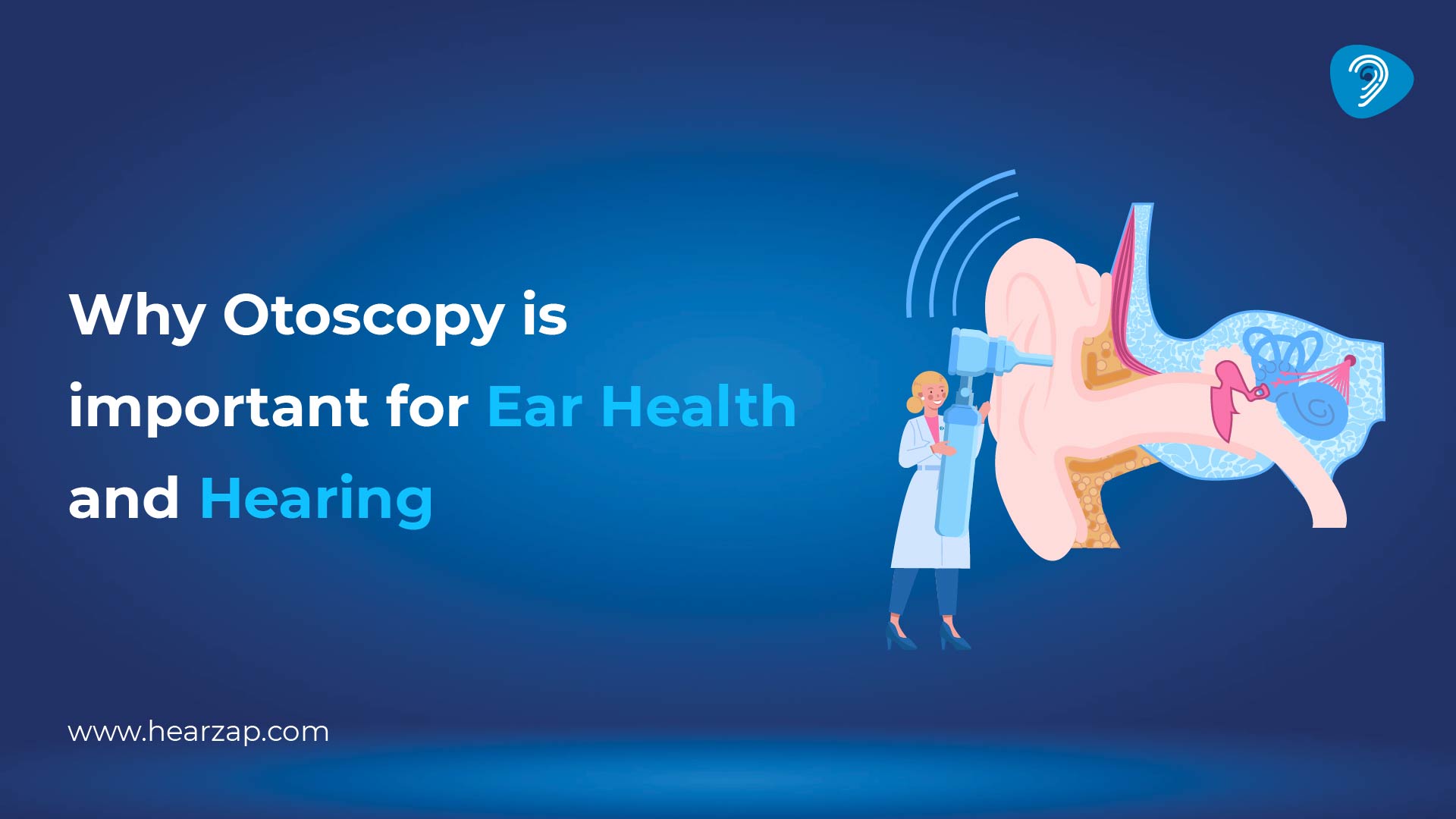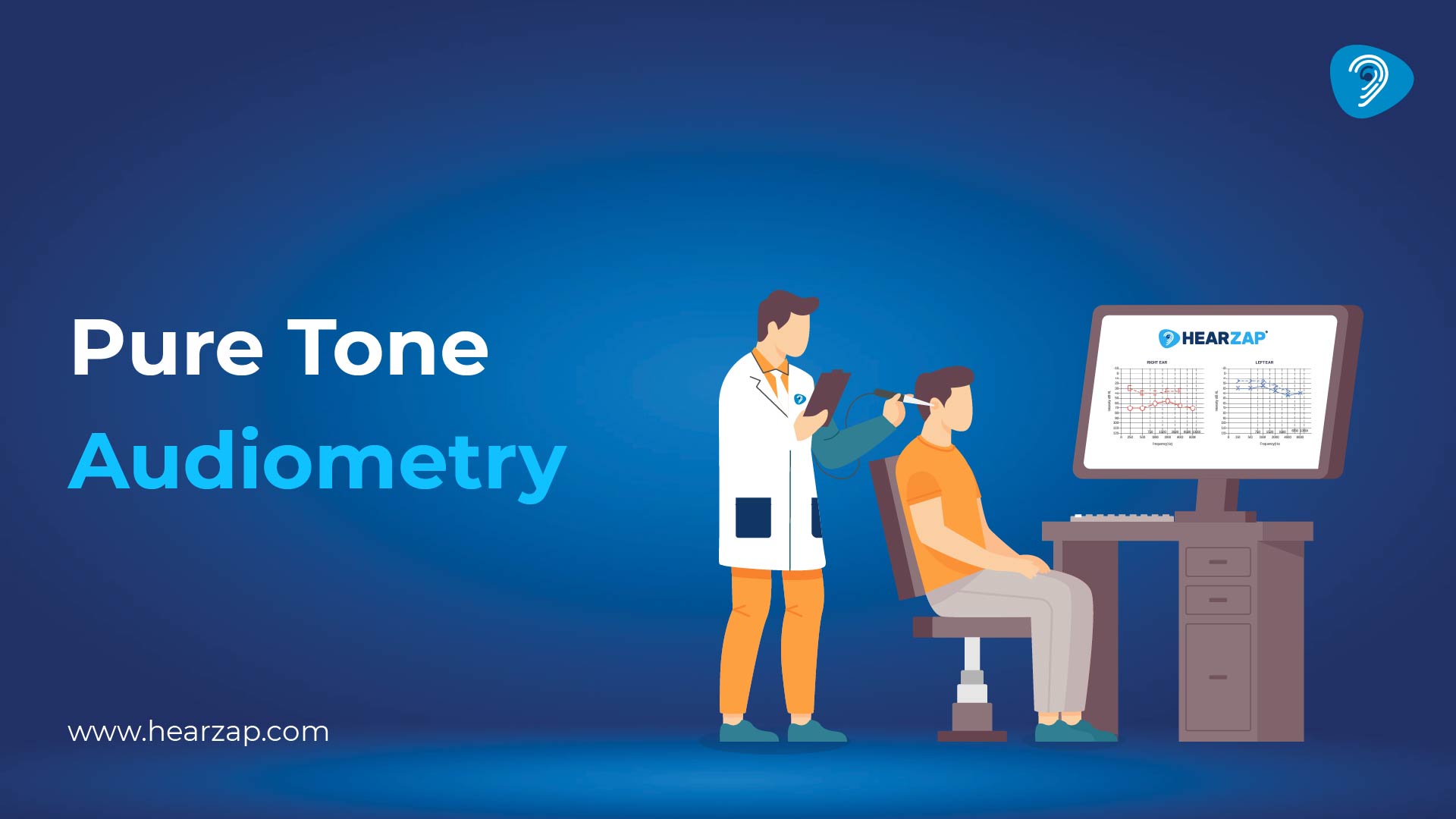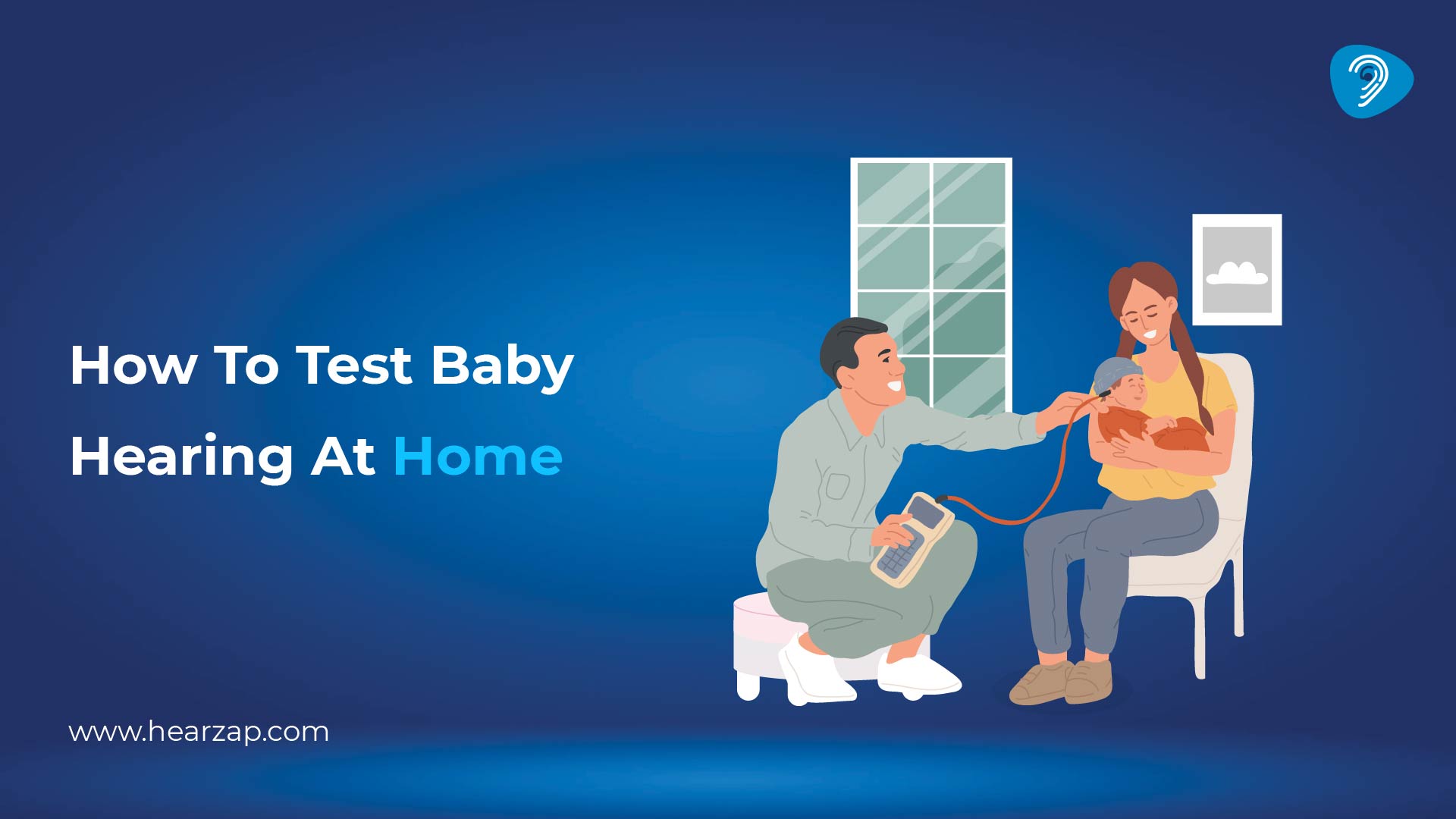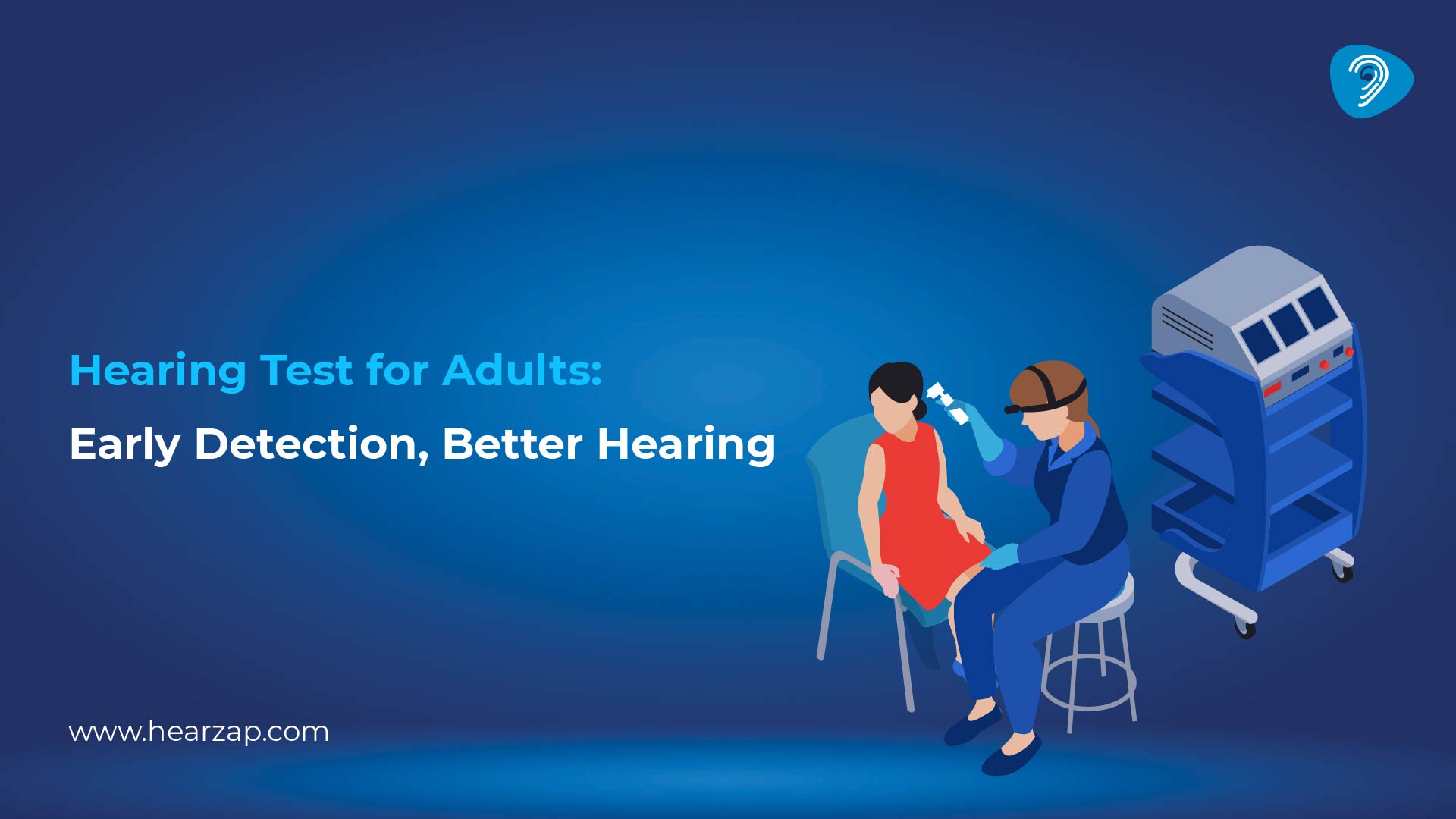HEARING TEST
Why Otoscopy is Important for Ear Health and Hearing
By Team Hearzap | Oct. 18, 2025

Healthy ears rarely demand attention, yet they quietly support balance, focus, comfort, and daily conversation. A quick look inside the ear canal with a lighted instrument can reveal far more than most people expect - from a wax plug to a delicate eardrum that needs gentle care. This visual check is called Otoscopy, and it sits at the beginning of most ear and hearing appointments. It helps explain pain, itchiness, muffled sound, or a feeling of pressure and guides safe next steps. It is quick, non-invasive, and reassuring because you can often see what the clinician sees.
What is Otoscopy?
Otoscopy is the visual examination of the outer ear canal and the eardrum using a handheld otoscope. Bright light and magnification let the clinician assess the canal lining, the shape, any wax present, and the eardrum’s colour, position, and movement. Because it is quick, comfortable, and non-invasive, otoscopy is used at the start of an appointment and sometimes repeated to document improvement.
So when people ask what is Otoscopy, the answer is simple: it is a careful look that turns observation into sensible action without needles or special preparation. It also helps decide whether further testing should proceed immediately or be delayed until the canal is healthy and the view is clear.
What is Otoscopy in Audiology?
In hearing care centres, Otoscopy in audiology refers to using the otoscope to confirm that the canal is clear and comfortable before any measurements. Audiologists rely on this step to ensure headphones or probe tips seal correctly and that readings are reliable. If wax blocks the canal or the skin looks inflamed, testing pauses and care is arranged first. These findings also help decide which domes, earmoulds, and hearing aid placements work best. For example, a narrow or curved ear canal might need a different tip or vent. Checking this early helps prevent fitting mistakes and makes appointments smoother for both adults and children.
Why is Otoscopy Important for Ear Health?
Ears are tiny spaces where problems can hide in plain sight. A short, well-lit examination separates issues that feel similar but require very different responses. For example, fullness might be a wax impaction, swelling from eczema, a trapped water bubble after swimming, or pressure behind the eardrum after a cold. Each path asks for a different solution. Otoscopy adds context, reduces unnecessary medication, and helps avoid over-cleaning that can scratch delicate skin. It supports safer self-care at home; once you see how close the eardrum is, cotton buds become less tempting. For clinicians, a clear view documents baseline health, helps track recovery after infection, and highlights red flags that merit referral to a General Practioner or ENT service. That balance keeps ears comfortable and listening dependable.
What Can an Otoscope Detect?
People often wonder what an otoscope can detect during a routine check. Common findings include:
- Earwax build-up, from dry flakes to soft plugs that muffle sound.
- Inflammation of the canal (otitis externa), linked to swimming, earbuds, or eczema.
- Eardrum changes such as redness, retraction, scarring, perforations, or fluid.
- Foreign bodies, especially in children - beads, paper, or tiny toy parts.
- Skin conditions like psoriasis or fungal activity that need specific care.
- Structural features, for example very narrow canals that influence ear-tip choice for hearing aids.
These observations help create a clear plan like giving cleaning tips, suggesting suitable ear drops, scheduling a follow-up, or booking a hearing test once the ear feels better. When images are available, they make it easier to see what’s going on and understand why certain recommendations are made.
What Are Otoscopes Used For?
When people ask what are Otoscopes used for, the answer stretches across everyday care and specialist tasks. Clinicians use them to document the ear’s condition before and after treatment, decide whether irrigation or micro-suction suits wax removal, check fitness for swim plugs, musician moulds, and ear impressions, verify that a sudden hearing drop is not simply wax or debris, and support follow-up after infections to ensure the canal skin has healed.
Video-otoscopes can capture pictures that make explanations clearer for families. The same tool is handy when assessing the comfort and positioning of hearing aids, especially if feedback or soreness has appeared. They are also used during workplace screenings and school checks to ensure ears are clear before any measurements.
What is a Pneumatic Otoscope?
A pneumatic otoscope has a small, soft bulb that gently puffs air into the ear canal while the clinician watches the eardrum. The tiny pressure change makes a healthy eardrum move; limited movement can suggest fluid behind it or stiffness after inflammation. This observation is quick and helps distinguish congestion that may settle from conditions that merit closer review. In children, the detail often explains why hearing seems dull after a cold, guiding whether to wait, treat symptoms, or schedule follow-up. It is a small addition that adds confidence to everyday decisions.
What is an Otoscopy Test?
In practice, it is a short, structured look that follows a clear sequence:
- Brief history: symptoms, recent colds, swimming, flights, or cleaning habits.
- External check: skin around the ear, tenderness, discharge.
- Canal inspection: wax, debris, swelling, shape, comfort.
- Eardrum view: colour, position, light reflex, scarring, or fluid.
- Optional mobility check with a pneumatic otoscope.
- Discussion: what was seen, what it means, and next steps.
Most people feel only gentle pressure from the tip at the canal entrance. After this step, your clinician decides whether to proceed with a hearing test, offer care advice, or book a review. If you already use hearing aids, the view may suggest a better dome size, vent, or fit.
With Hearzap, you can easily follow up on these next steps book hearing tests, get expert guidance, or explore hearing aid adjustments and accessories all in one convenient platform.
Benefits of Regular Otoscopy for Hearing Health
Ear health changes with seasons, habits, and age. A quick otoscopic check every so often can make everyday listening easier. Practical benefits include:
- Timely action: catching wax early prevents sudden muffled hearing before a meeting or flight.
- Safer cleaning: personalised guidance helps you avoid cotton buds and risky gadgets.
- Smarter referrals: clear pictures and notes speed up visits when needed.
- Better device comfort: for hearing aids, canal observations inform tips, vents, and tubing choices.
- More accurate tests: clear canals avoid measurement errors.
- Peace of mind: seeing a healthy eardrum often eases worry.
If you are exploring an online hearing test at home, remember that otoscopy answers a different question: it shows whether the pathway to the eardrum looks clear. Using both often gives a fuller picture before any decisions about care or equipment.
When Should You Get an Otoscopy?
You do not need to wait for pain. Consider a check when you notice:
- Fullness, itchiness, or crackling after a cold or swim.
- Sudden dullness in one ear, which might be a wax plug.
- Ongoing use of earbuds or over-ear headphones.
- Frequent exposure to dust, water sports, or humidity.
- New hearing aids or domes that feel tight, whistle, or slip out.
- Recurrent infections in a child or concerns about speech clarity.
Many people include an ear check with a routine hearing test, before long flights, or ahead of busy seasons. If you work in noise or wear ear protection daily, regular otoscopy helps spot irritation early.
Conclusion: Protecting Your Ears with Otoscopy
Otoscopy is a small step that leads to clear decisions. A few well-lit minutes separate look-alike symptoms, guide safe cleaning, and prepare the way for accurate hearing assessments and comfortable devices. It reduces guesswork when a child seems unsettled, and for adults it keeps plans moving without last-minute surprises. If you have questions about wax, water, or how your ears feel after a cold, a quick check is a sensible place to start. That small habit keeps day-to-day listening steady and helps you act early if something changes.
FAQs
1) Is otoscopy painful?
Most people feel only light pressure from the soft tip. If the area is sore, the clinician pauses and adjusts the angle.
2) How long does an otoscopic check take?
Usually a few minutes. Extra time may be needed if wax blocks the view or photos are recorded.
3) Can otoscopy remove earwax?
Otoscopy is a visual check. It confirms whether wax is present and which removal method, if any, suits the situation.
4) Is otoscopy safe for children?
Yes. Small tips, gentle handling, and quick views keep it comfortable for most children.
5) Do I need to prepare for an appointment?
Avoid cotton buds or drops on the day, and share symptoms, swimming, flights, or recent colds.
6) How often should I have my ears checked?
There is no single schedule. Many people include a quick look during routine hearing care or when symptoms change.
Related Blogs

Pure Tone Audiometry Test: Procedure, Purpose & Cost

How to Test Baby Hearing at Home

Hearing Test for Adults - Signs, Symptoms & Types
Contact us
We are here for all your hearing needs, from hearing tests to hearing aids. Fill out the form below, and we will give you a call soon.
Please enter a valid mobile number with 10 digits.
Recent Blogs
By None | Dec. 9, 2025
By None | Dec. 8, 2025
By None | Dec. 4, 2025
By None | Dec. 2, 2025
By None | Nov. 28, 2025









